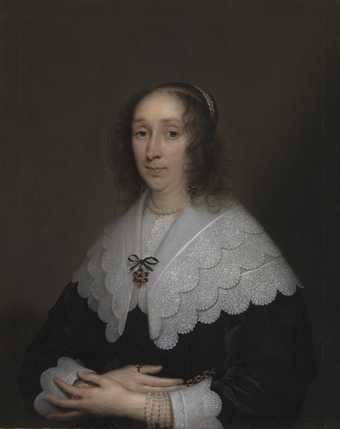
Fig.1
Cornelius Johnson 1593−1661
Cornelia Veth 1644
Oil paint on canvas
806 x 658 mm
N01321
This painting is in oil paint on canvas measuring 806 x 658 mm. The thick, linen is plain woven with approximately 14 horizontal and 11 vertical threads per square centimeter (fig.2). Cusping on all four edges indicates that we have something close to the original dimensions, although the original tacking edges are no longer present.1 The painting has a glue lining and a stretcher that appears contemporary with the lining.
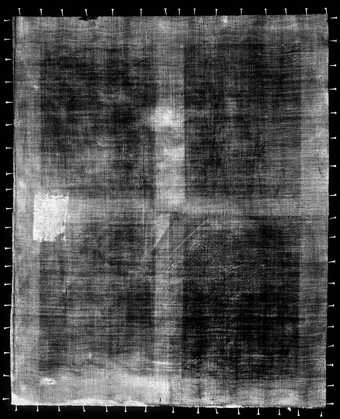
Fig.2
X-radiograph of Cornelia Veth
As in the portrait of the sitter’s husband, Apolonius Veth (Tate N01320), the ground consists of two layers followed by a priming (figs.3 and 4). The first coat, which was applied directly to the canvas, is bright opaque red; is composed of red earth colour, chalk and red lake.2 This was covered over with a coat of opaque grey paint. The final coat, the priming, is biscuit coloured; it is composed of lead white, black, glassy particles, yellow earth colour, cologne earth and pipe clay.
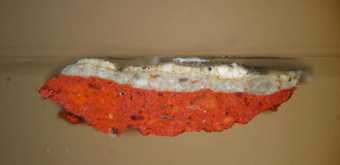
Fig.3
Cross-section through the cuff, photographed at x120 magnification. From bottom to top it shows: Red ground; grey ground; biscuit coloured priming
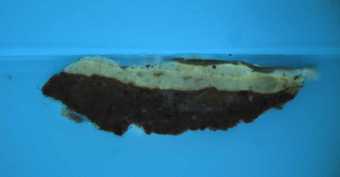
Fig.4
The same cross-section as fig.3, photographed in ultraviolet light
Underdrawing is not apparent but there appears to be thin, sketchy dead colouring underneath the figure.3 The image was built up with thin, fluid paint with little texture except in the texture of the jewellery and lace. The coloured tones were worked together wet-in-wet on the painting (figs.5 and 6).
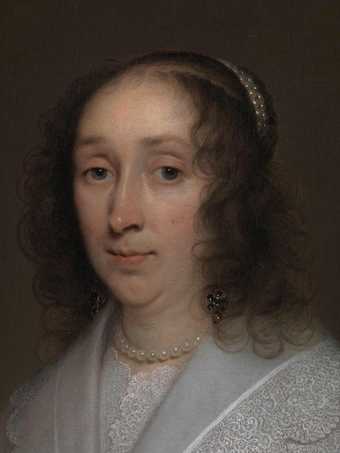
Fig.5
Detail of the face
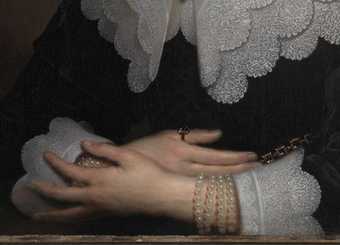
Fig.6
Detail of the folded hands
The brown hair was mixed from lead white, cologne earth, black (probably bone black), yellow lake and a trace of ultramarine. The greenish brown background contains lead white, black, yellow earth colour, red lake, smalt, red earth colour, gypsum and a trace of vermilion. The black costume contains lamp black, lead white and glassy particles, which were probably added as a siccative, lamp black being a slow drier in oil. The sitter’s blue eye contains smalt or low grade ultramarine, glassy particles, black, yellow lake and pipeclay. The flesh paint on the sitter’s right hand contains lead white, glassy particles, vermilion, smalt, gypsum, and a little black.
The painting was cleaned and restored in 2003. The varnish is a synthetic resin.
May 2004
